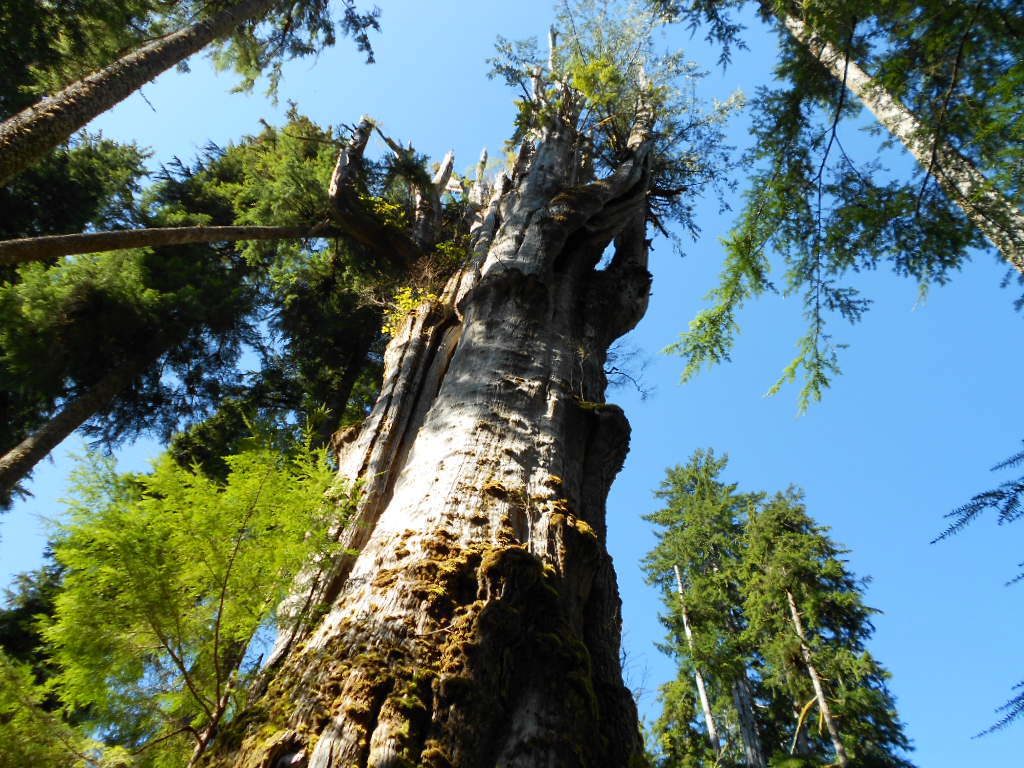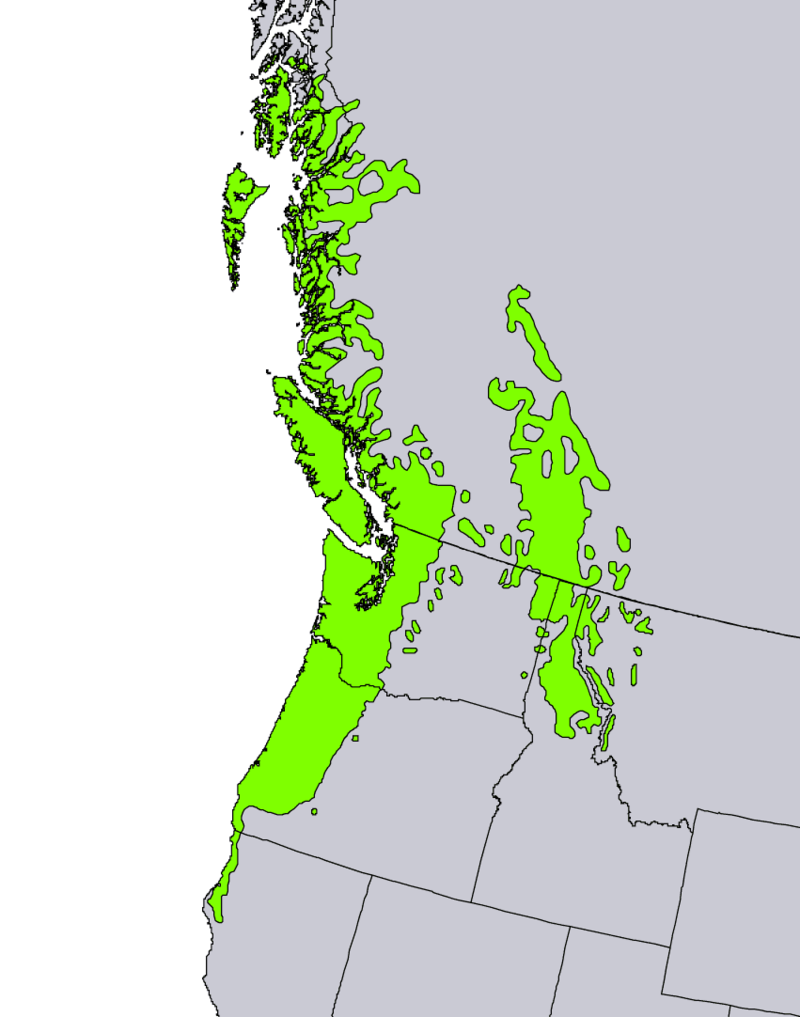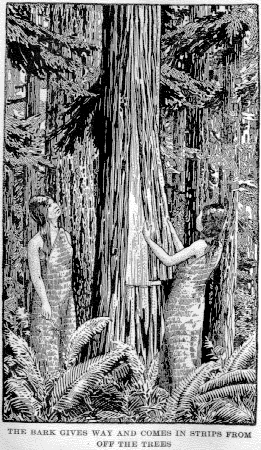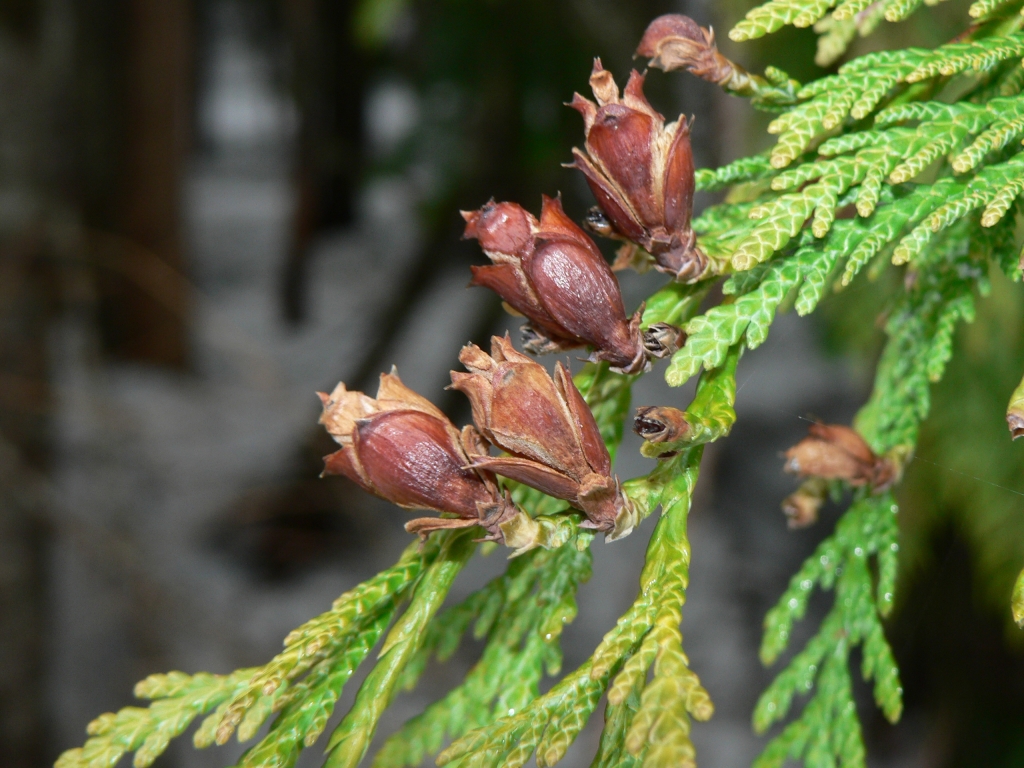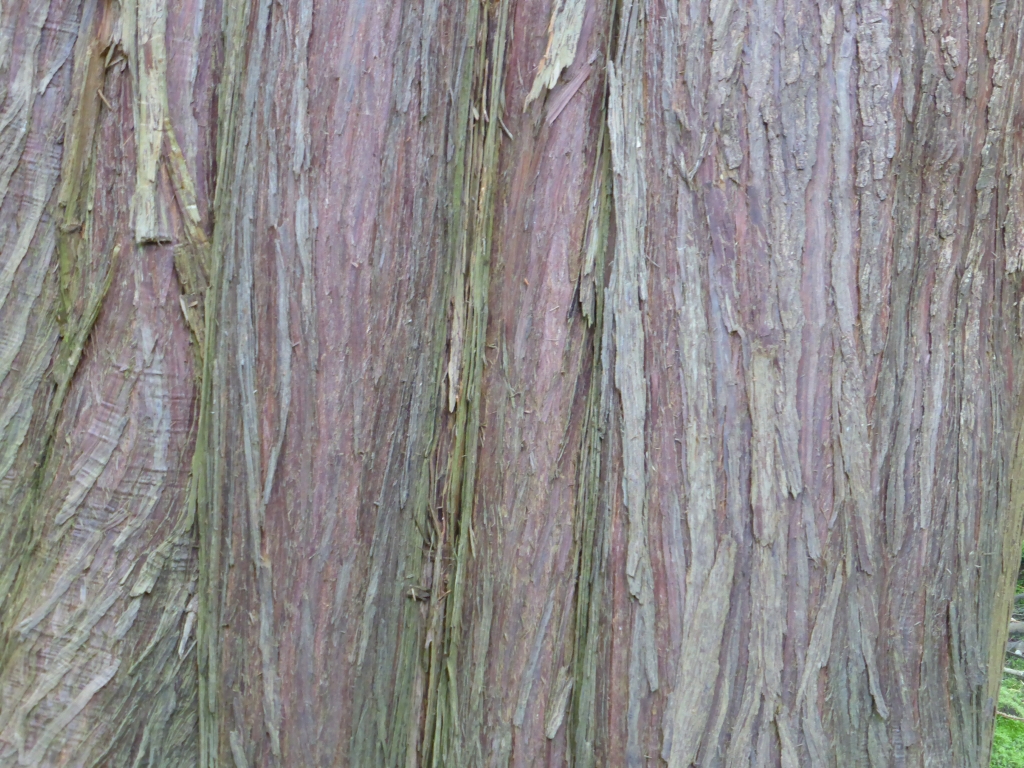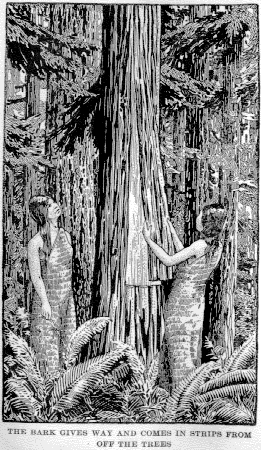
Thuja plicata, first described in 1824 in by James Donn (1758-1813), and later completed by David Don (1799-1841) in a work by Aylmer Bourke Lambert (1761-1842), is commonly known as western red-cedar, giant arborvitae, shinglewood and canoe cedar. The provincial tree of British Columbia, Canada, having extensive applications for indigenous Americans of the Pacific Northwest.
Description. western red-cedar is an evergreen coniferous species of tree which will grow to mature heights of 200 to 230 feet (65 - 70 m) tall with a 10 to 13 foot (3 - 4 m) trunk diameter, measured at breast height. Trees growing in the open may have a crown that reaches the ground, whereas trees densely spaced together will exhibit a crown only at the top, where light can reach the leaves. It is a long-lived species; some individuals can live well over a thousand years, with the oldest verified being 1,460 years.
Champion Trees. The "Quinault Lake Red cedar" is the largest known Western Red cedar in the world, with a wood volume of 17,650 cubic feet (500 m3). Located near the northwest shore of Lake Quinault north of Aberdeen, Washington. It measures 174 feet (53 m) tall with a diameter of 19.5 feet (5.9 m) at breast height.
The tallest known individual is the Willaby Creek Tree south of Lake Quinault, at 195 feet (59 m) in height.
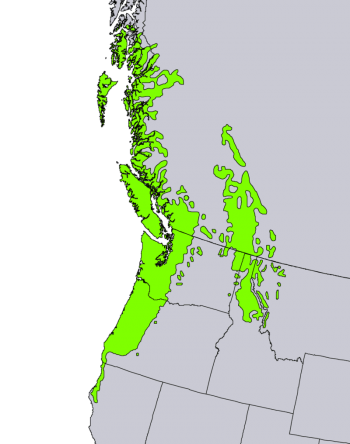
Distribution. This species is native to USA - Alaska, Montana, Idaho, Washington, Oregon and California; and Canada - British Columbia, and Alberta; growing at elevations from 0 to 6,500 feet (0 to 2,000 m) above sea level. It is typically found growing on various substrates, commonly on moist sites, in mixed coniferous forests.
